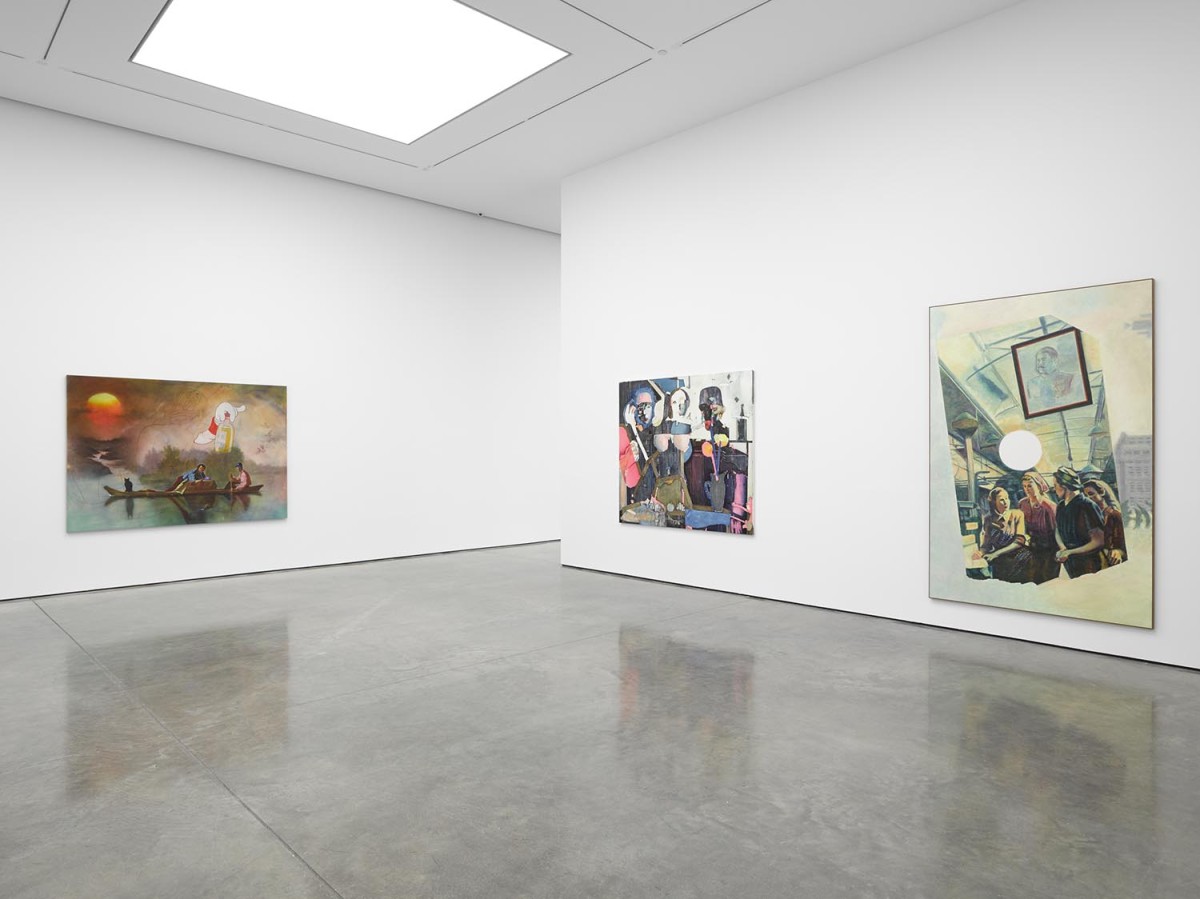


'Tightrope Walk: Painted Images After Abstraction', installation view, North & South Galleries, White Cube Bermondsey, 25 November 2015 - 24 January 2016. Photo © White Cube (George Darrell)
For those of you not sensibly leaving town for the holidays, the next week or two offers the opportunity to take a more leisurely approach to getting round town to see shows. Down at White Cube in Bermondsey, renowned US critic Barry Schwabsky has put together a substantial exhibition that, thoughtfully and enjoyably, examines the way painters have approached the proposition of figuration since the advent of Abstraction in the first decade of the last century. With 67 works by 44 artists and accompanied by a fully illustrated hardback book, this has the feel of a museum show, and is another play in the game we are all watching: that of the radically shifting positions of public and private institutions.
The title, Tightrope Walk, is a quotation from a conversation between Francis Bacon and David Sylvester in which the artist explained his work as ‘a kind of tight rope walk between what is called figurative painting and abstraction’. The show occupies all the South and North Galleries and is divided in to seven sections, each addressing a different aspect of Schwabsky’s argument. Across the whole exhibition he has concentrated on the human figure, or the object as stand in for it, but the different rooms address themes such as ‘the fragment’ with single-sentence statements to announce them: “Painting responds to and incorporates the photograph and mechanical reproduction; fragmented images can be recombined into collage-like constellations”. With no exhibition labels and no didactic wall texts, the contrast between this and a museum show is very apparent.
The North Gallery contains a baker’s dozen paintings, that engage with abstraction through pleasing geometries: Alice Neel’s Sol Alkaitis, 1965, is a male half figure whose angular pose seems to press against the four boundary edges of the canvas while Alex Katz’ Dorothy, 1974, presents a hieratic head fit for a coin of the realm. Over on the other side of the space, Lucian Freud’s Parts of Leigh Bowery, 1992, focuses on the sitter’s, ahem, mid-section, and forces the viewer to register how the angle at which Bowery’s ‘part’ lying across his thigh echoes the position of his right arm, just as his left arm and the curve of his wrist unconsciously mimic the sagging edge of the model’s couch. The Freud painting shares a wall with Henri Matisse’s exquisite little portrait head, Laurette au chale vert, 1917, which in turn leads you around the corner to Barkley Hendricks’ diptych The Twins, 1977. This last posits a kind of photo-realistic accuracy that sends the eye racing to spot the differences between the black suited and white suited figures.
Entering Room 1 of the South Gallery you spot Marcel Duchamp’s hand-coloured collotype of his painting Nude Descending a Staircase, 1912, a large Patrick Caulfield and a Gillian Carnegie still life sharing the opposite wall, underscoring Schwabsky’s point that ‘detached from the model, painting can proceed from image to image’. Moving in to the next space a second work by Carnegie causes a double-take, repeating the same still life composition in grisaille at three year’s distance from the first painting. In Room 3 paintings by Chris Ofili, Sanya Kantarovsky and Apostolos Georgiou feature embracing figures, and on the back wall objects dominate with Philip Guston, Michael Simpson and Domenico Gnoli, punctuated with a tiny Giorgio Morandi, to make the art historical point about the metaphysical life of things.
This is a bracing scamper across more than a hundred years’ of painting in Europe and the US – Schwabsky’s essay lists many other artists he could have included – and is a fascinating exercise that proves the medium’s vitality yet again. Go more than once. If this were a special exhibition at a museum, the likelihood is you would have to pay. This is free.
Caroline Douglas
Director
Tightrope Walk: Painted Images After Abstraction, curated by Barry Schwabsky, at White Cube Bermondsey, 144 – 152 Bermondsey Street, London SE1 3TQ.
Exhibition open Tuesday - Saturday 10.00 - 18.00, Sunday 12.00 - 18.00. The gallery will close Wednesday 23 December and reopen Tuesday 5 January. Exhibition continues until 25 January 2016. whitecube.com